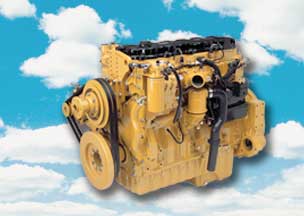Fleet Management Information for Sweeping Professionals |
Mandated 2010 Emission Standards and Emerging Technologies for Sweeper Truck Chassisby Ranger Kidwell-Ross Starting in 2010, virtually all trucks sold in the U.S. will have to meet new, much more stringent emissions' standards. The following is a layperson's explanation of the two potential technologies that currently are being used to meet the new standards, Selective Catalytic Reduction (SCR) and Exhaust Gas Reduction (EGR). 
This article provides information on both of the new emissions' technologies, since both will soon be available in the U.S. marketplace. International/Navistar is the only manufacturer that will be using EGR for its 2010 model year chassis. The other chassis providers, including Isuzu, the largest provider of commercial diesels in the world, as well as Freightliner and all of the others that sweepers are currently mounted on, will be going with the SCR technology. Included in this article we have an audio interview with Randall Ray, manager of engine sales and marketing with International/Navistar. Ray discusses EGR in detail, as well as covers how International/Navistar has already met the emerging challenge to get the company's engine emissions cleaned up. Although International/Navistar is alone in its intended usage of EGR system to meet the emissions' standards, as Ray explains in his audio interview the SCR systems are seen by some as more cumbersome and expensive, since they require some type of 'diesel exhaust fluid' (DEF). This will primarily take the form of liquid urea. The downside of the SCR system, Ray will tell you, is that use of a DEF requires an additional tank for storage of the liquid. This is especially difficult on a sweeper, where all the 'real estate' is taken up through addition of the sweeper body. The tank also must be insulated to ensure the urea never reaches over 105-degrees Fahrenheit. Users must also purchase and refill the DEF tank to ensure the system doesn't run out, which Navistar is opposed to because it results in additional user expense and time. Not much of a problem to the sweeping industry, since the vehicles go back to a home base at the end of each shift, is the current lack of a supplier network for the DEF fluid. This network is expected to expand to all truckstops in short order, however. I also spoke with Todd Bloom, vice president of marketing and fleet operations for Isuzu, said his company intends to use selective catalytic reduction (SCR) to achieve the 2010 standards for emissions of nitrogen oxides (NOx) by diesel engines. Isuzu intends to continue to use both a diesel particulate filter (DPF) and exhaust gas recirculation (EGR), which it introduced in its trucks in 2007. The new technology will be used in Isuzu engines sold in its trucks in the U.S. under the Isuzu, Chevrolet and GMC trademarks. Shaun Skinner, Isuzu's executive vice president and general manager, is quoted as saying: "Isuzu has been developing aftertreatment technology in Japan for many years. We've studied different systems, and found SCR to be highly reliable under even the most extreme applications and conditions." Below we have a basic overview of both of these competing emissions' technologies, adapted from Wikipedia. This will provide you with the advantages and disadvantages of the EGR and SCR methods of emissions' cleanup. Our intent is that this will provide the balanced coverage of information you need to make well-informed purchase decisions.
International/Navistar has chosen to use Exhaust Gas Reduction (EGR) technology to meet the new standards.
According to Ray, International/Navistar has chosen to meet the new emissions' standards via use of EGR technology for these reasons:
Note: The interview will play without downloading any files onto your computer. If you hear the interview at 'chipmunk speed,' you will need to download the latest version of Adobe's free Flash player. Randall Ray may be reached via email sent to randy.ray@navistar.com. You may also reach Ray by calling 708-865-3074.
For more information on this topic, we offer several PDF handouts, each explained and linked below.In December of 2008, Heavy Duty Trucking magazine published an article, provided here as a PDF file, that discusses both of the emerging technologies in detail. Although the information is oriented toward the over-the-road trucking industry, the info provides the detail on both systems that anyone in sweeping will need to make a sound decision on new purchases. In January of 2009, an article by Kim Doran, editor at the website entitled factsaboutscr.com, cites a study done by Quixote Research Group. Although somewhat suspect, since it was funded by the SCR Stakeholders' Association, it claims that, when each emissions technology was briefly described, 53.4 percent of the 828 respondents said that they would likely consider SCR for their next truck purchase compared to 29.4 percent that would likely consider increased EGR. For the entire 4-page PDF file, click here. If you have questions or comments about this interview, or know of other links or information we should add, please, let us know and we can add them in as an addendum to this article. |
© 2005 - 2021 World Sweeper
|
Back to Fleet Management InformationSite Map / Table of Contents |